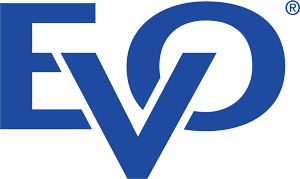Level 2 and Level 3 purchase card data can help B2B merchants lower their credit card processing fees, reduce chargebacks and fraudulent transactions, and even increase business with certain industries.
What Are Level 2 and Level 3 Purchase Card Details?
When a credit card payment is sent for processing, it’s accompanied by data that helps card brands understand where the payment is coming from and what the buyer is purchasing. Based on the data included in the transaction, the transaction is categorized as Level 1, Level 2, or Level 3. The more data on the sale and the purchaser, the more confident card brands will be that the transaction is legitimate and carries less risk of having a chargeback.
Understanding the differences between Level 1, Level 2, and Level 3 data will help you make an informed decision about how to manage transactions and improve your business’ bottom line.
Level 1 Data
Level 1 data is the most common payment data level, typically used for B2C transactions. With Level 1 data, the merchant collects basic information like consumer data, account data, and transaction amount to validate the transaction for card-not-present sales.
Level 2 Data
Level 2 data requires additional purchasing data and is designed for corporate, commercial, government, and general B2B transactions. Level 2 data qualification requires merchants to collect all Level 1 data plus the following data fields per transaction:
- Invoice/Order number
- Tax identifier
- Customer code
- Purchase order (PO) number
- Tax amount
Additionally, implementing Level 2 data qualification requires a standalone terminal or gateway dedicated to Level 2.
Level 3 Data
For merchants that process a high percentage of B2B or B2G transactions, Level 3 data submission will provide the most savings. However, it also requires the most details collected per transaction, including all Level 1 and Level 2 data requirements, plus:
- Item product code
- Item commodity code
- Item description
- Item quantity
- Item unit of measure
- Item amount
- Freight amount
- Discount amount
- Duty amount
Below is a summarized chart of the data required for each level of purchase card details.
| Field | Level 1 | Level 2 | Level 3 |
| Amount | X | X | X |
| Date | X | X | X |
| Tax ID | X | X | |
| PO Number | X | X | |
| Tax Amount | X | X | |
| Ship To Zip Code | X | X | |
| Invoice Number | X | X | |
| Order Number | X | X | |
| Item Product Code | X | ||
| Item Commodity Code | X | ||
| Item Description | X | ||
| Item Quantity | X | ||
| Item Unit of Measure | X | ||
| Item Amount | X | ||
| Item Extended Amount | X | ||
| Freight Amount | X | ||
| Duty Amount | X | ||
| Discount Amount | X |
The Benefits of Level 2 and Level 3 Data Submission for Credit Card Processing
Merchants know that accepting credit cards makes the customer experience more convenient and can even boost revenue. Even though there are fees associated with processing credit cards, many consider those fees to be a normal cost of doing business. However, turning attention to how payments are processed can reduce a merchant’s costs. Card brands are willing to offer lower fees to merchants who process transactions with Level 2 and Level 3 data because the added details help lower the risk that these transactions are fraudulent.
Level 2 and Level 3 data also give merchants an edge against fraud. With additional data, the transaction is verified by multiple factors, making it more secure. When merchants provide the purchase order number, invoice number, product codes, and item descriptions, they will have added protections against chargebacks and can reduce the time and expense needed to address them.
Lastly, merchants can leverage Level 3 reporting capabilities to win new business. Some business and government clients require reports that track and analyze their spending, so they will only be willing to work with a provider that is sending Level 3 data when processing their credit cards.
Difficulties with Processing Detailed Data
Attempting to manually collect and send Level 2 and Level 3 data for processing can quickly become unmanageable. All of the fields need to be pulled from the accounting document and typed into a virtual terminal for each transaction. For Level 3 data, since the required fields are associated to the line item, the amount of data will multiply for every item sold. With this in mind, one transaction could require tens if not hundreds of data fields to be entered in order to qualify for a Level 2 or Level 3 transaction.
Solving the Problem with Automation
As with other business processes that keep your operation running, you will need to find a way to optimize Level 2 or Level 3 data collection for credit card processing. The answer is automation. Instead of managing data for these transactions manually, you can utilize a solution like PayFabric that is designed to support sending Level 2 and Level 3 transaction data during transaction processing. When PayFabric is integrated with your accounting system, it will automatically pull Level 2 and Level 3 data from accounting documents to be sent when processing credit cards. This streamlines the process for you and your staff, making Level 2 and Level 3 data submission as easy and convenient as Level 1 data submission.
Implementing the right solution and working with the right payment company will help you create a strategy that secures transactions, keeps costs low, and enhances the customer experience.
Ready to evaluate Level 2 and Level 3 data submission options for your business? Reach out to us at 1-909-482-4701 or sales@nodus.com.

